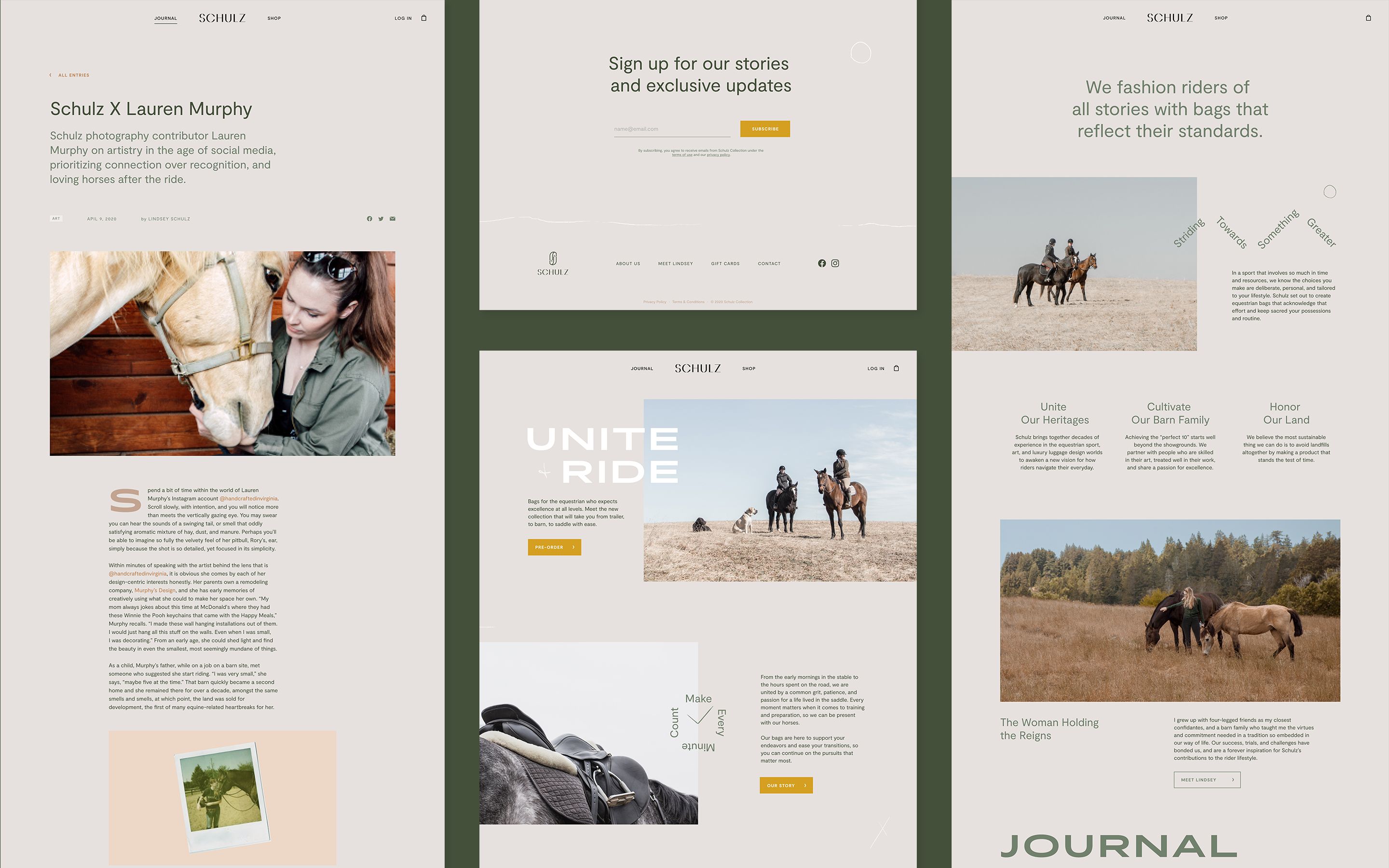
Activate Your Brand: From Idea to Reality
If you're part of a brand-focused startup or company, you're probably no stranger to doing the "internal work" of clarifying what your business does and what it stands for. After all, a great brand starts with a solid strategy—a vision that unifies, a 'why' that clicks, and a tonal architecture that just feels on point.
But there's a critical moment that often leaves entrepreneurs and their teams unclear: how to shift from brand ideation to real-world activation. We've seen it time and again, where a dedicated team has strategy buttoned up into a beautifully articulated internal deck, but the outward brand presence falls short of the ideal—especially when it comes to content and social media.
The team at Schulz knew that to keep the momentum of their brand-building, they would need to start showing it to the world, even before a website or product launch. As their digital home was underway, we worked with the team to launch their content channels early and strong—so they would have solid footing for their bigger launches ahead.
It's been a year since Schulz's debut into the world. To celebrate, we're sharing how you can take your brand from abstract ideals to concrete content touchstones—and connect with your ideal customers every step of the way.
1: Define your visibility goals.
Before jumping in to activate your brand's content, you need to know why. Consider where your brand is currently and your visibility goals for your content. For instance, if you're in a pre-product stage like Schulz was just a year ago, your goals will likely be more focused on brand awareness, instead of driving sales.
Take a few moments to define your overarching goals. What do you hope to achieve with your content? How will you know if you're seeing results shifting in a positive direction? How will you transform your goals into measurable outcomes? Metrics, although sometimes tedious, are immensely helpful. Don't worry about tracking every possible outcome—simply focus on the valuable numbers to help uncover important truths about your content and then continue to refine.

2: Decide where your content will live.
It's tempting to think your brand needs to live everywhere. Just because TikTok or Clubhouse are the newest trends doesn't mean your brand should jump in—especially if the platform doesn't fit the underlying ethos of your business.
When it comes to social media, we often advise our partners to keep it simple and prioritize what has the most impact. What platforms are your customers already on? Where do you imagine the most traction will occur? If your brand were a person, where would they be hanging out online?
The sweet spot is at the intersection of where your customers already are, and where your brand (and team) is willing and capable of being present. Don't let your content and marketing strategy be driven by shoulds—if you don't have the time, budget, or even desire to engage your brand in certain ways, then pump the breaks on those strategies.
Select 1-2 platforms where you believe you can make the most impact. Additional channels can certainly be part of your long-term strategy—and you can build them out in the future—but starting with everything all at once can lead to more overwhelm and less traction.
3: Identify your content categories.
With specific brand values in mind, you can start the process of building your content categories or "pillars." These are essentially themes that provide you with a loose framework to build content across channels. Each pillar should relate back to your overarching brand strategy—meaning that every piece of content, from email copy to social media, touches on at least one of your core brand messages.
Identifying and building your content pillars can be as simple as doing an audit of what your brand stands for and what kind of content you're interested in sharing with your intended audience. Consider where the two intersect. With Schulz, for instance, we knew that diversity, inclusion, and giving back were core values of the brand—so our team developed an Instagram series that highlighted equestrian nonprofits and provided meaningful content that followers could reshare and engage with.
You might feel a deep personal investment with a particular content theme—but double-check that all of your content categories align with what your ideal customer wants. For a new brand, this might require a little bit of time, attention, and experimentation. Note which content is performing best and what falls flat. In time, you'll gain a deeper sense of exactly what your customers gravitate toward and you can finesse your content accordingly.
4: Devise channel action plans
Once you have a broad sense of your franchises and how these align with the core pillars of your brand, it's time to devise a roadmap for each channel.
With your content categories, you know what you're going to say. With your chosen platforms, you know where you're going to say it. Now, it's time to get granular about how. Consider each platform individually and explore the best practices on how your brand will show up on that channel.
What do most people expect from that channel? How can you package your content categories in different ways? And how can you repurpose content on each channel in a way that keeps it compelling and engaging? For example, a long-form blog post can be repurposed into a snappy pull-quote for Twitter or a more formal sharable bite for LinkedIn.
You may also want to account for shifts in tone and voice, depending on the channel. Although the overarching message may be the same, you may want to retool the approach slightly depending on each channel.
At Together, we use Notion to organize and develop editorial content. This tool offers helpful cultivation of each platform and content, ensuring that a brand is hitting your core values in an effective, engaging, and memorable way.
Finally, when it comes to implementation, make sure you have the dedicated time and talent. Taking a plethora of great content ideas and bringing them to the world requires consistent work—if you're uncertain if you can fully commit to your content, you might consider hiring an outside hand or two to help implement your strategy.

5. Remember, the best brands evolve.
Even with the investment of a polished brand guide, your messaging will likely evolve as it enters the world and starts to meet your consumers. We'd even argue that an astute, nimble brand should evolve within its cultural landscape—particularly when it's a startup still finding its footing.
After several months of testing content and building relationships, Schulz felt a deeper pull to make sustainability a more central focus of the brand. This naturally necessitated a shift in the mission statement, transforming from "Fashioning riders of all stories with bags that reflect their standards" to "We fashion riders of all stories with products that do better: forward in style, reliable in all settings, conscious of the earth." This shift allowed Schulz to further own and engage with this content theme on all platforms.
When evolution occurs naturally within your brand, notice it and get curious. Is there an opportunity to further distill your core message or your most central brand pillars? Reimagining how you might retool a message or a tactic to reach the heart of your brand—and connect more deeply with your audience—is not a departure. In fact, it's a propulsion forward to something more precise and articulate about your brand.

6. Build as you go.
Lastly, don't rush as you activate your brand. So many brands are chasing the big hit—that instant explosion of internet fame—that we often forget that there are thousands of quiet brands in the world with stellar products who are consistent, steady, and successful.
Remember: What a brand is today is the result of a thousand iterations over time. When Schulz launched, we kept our content strategy relatively streamlined. And as we grew, we began to integrate new series. Trying to manage all of those initiatives in the early stages would not have been a sustainable approach—but through gradual experimentation and incorporation, we were able to implement a number of new content series in a successful way.
Look to contribute and grow meaningfully—all while staying connected to the true heart of your brand. With a mindset of deep alignment to the values of your business, you can't go wrong—or stray too far off the path.
See more of our work for Schulz here.

